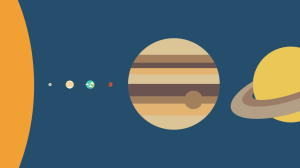
Planet Sizes and Order
How large are the planets and what is their order from the Sun?
See how far the planets are from the Sun or Earth (current, future, or past) plus their brightness and apparent size in sky.
See how large the planets appear in the sky. For local times and where to look etc., try the night sky in your location. The planets' apparent size is measured in arcseconds ("). For comparison, the Sun and the Moon measure about 1800 arcseconds.
We measure the apparent brightness of celestial bodies in magnitude. The brighter a planet shines, the lower the magnitude value. Negative numbers indicate that the planet is very easy to spot in the night sky, even with ambient light. The planets also have phases, like the Moon, but these are not indicated in this chart. The two planets which are closer to the Sun than Earth, Mercury and Venus, have the most easily visible planetary phases, but you need a telescope to see them.